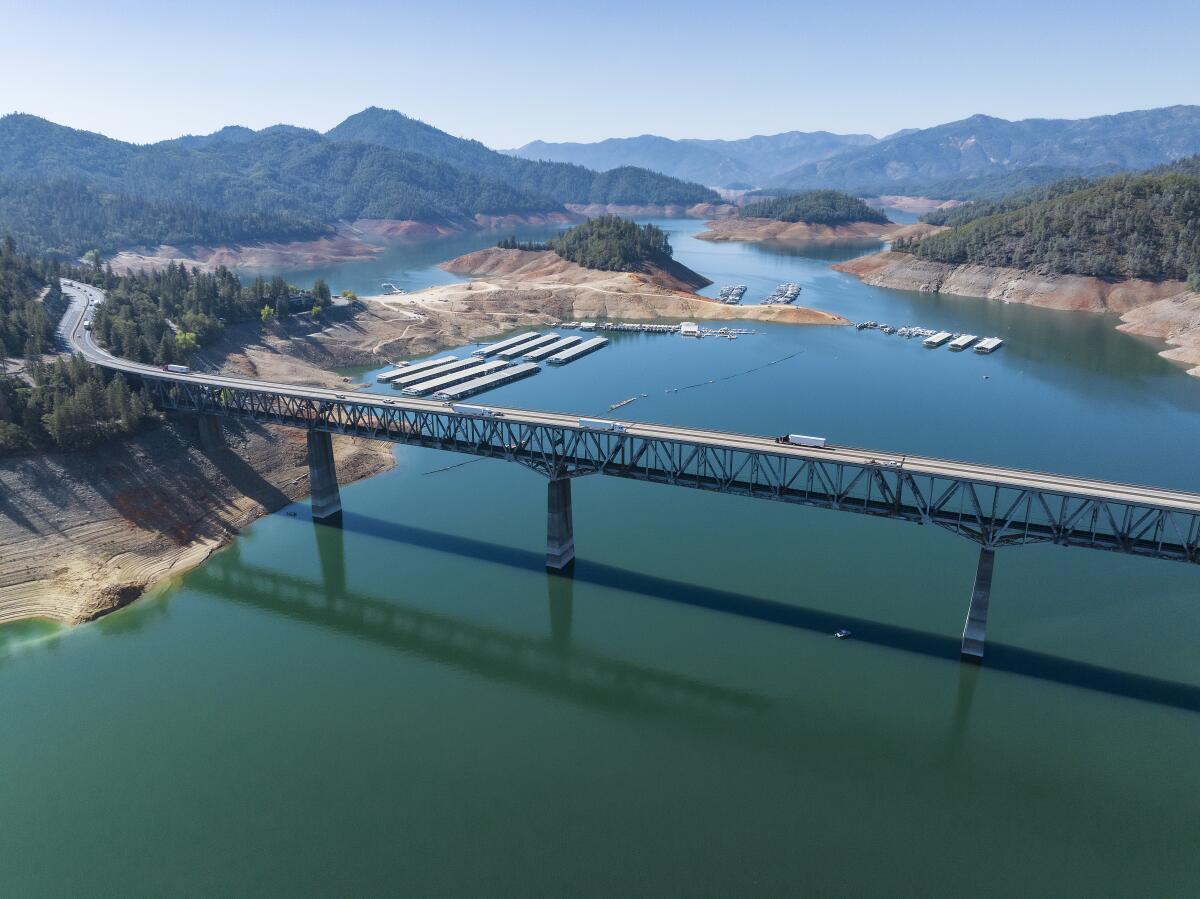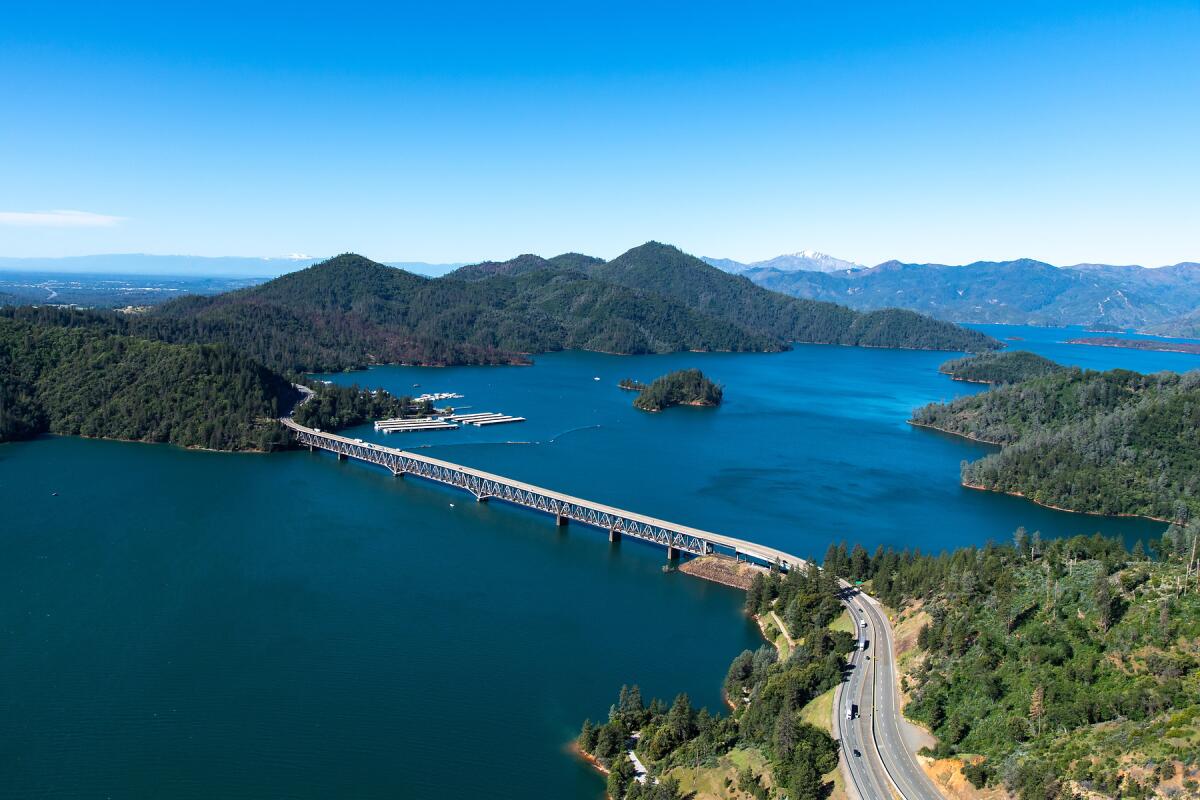-
San Diego sheriff: Migrants did not try to forcefully stop school bus - August 31, 2024
-
One stabbed, another injured in altercation on L.A. Metro bus - August 31, 2024
-
Trump Judge Has ‘Two Options’ as Future of Case Unclear: Analyst - August 31, 2024
-
What to Know About Putin’s Planned Visit to Mongolia Amid ICC Arrest Warrant - August 31, 2024
-
Buying sex from a minor could be a felony under bill headed to Newsom - August 31, 2024
-
Democrat Lawmaker Switches Party to Become Republican - August 31, 2024
-
Misdated Mail-In Ballots Should Still Count, Pennsylvania Court Rules - August 31, 2024
-
Cause and manner of death determined for Lucy-Bleu Knight - August 31, 2024
-
NASCAR Craftsman Truck Series Announces Return To Iconic Circuit In 2025 - August 31, 2024
-
At Pennsylvania Rally, Trump Tries to Explain Arlington Cemetery Clash - August 31, 2024
Striking before-and-after photos: Parched Lake Shasta is transformed
For a second consecutive year, Californians can celebrate the rejuvenation of the state’s reservoirs.
Lake Shasta, the state’s largest reservoir, is full again after reaching perilously low levels in the drought-stricken years from 2019 through 2022.
The satellite images below, from the NASA, show the lake in April 2022, at left — when it was at 40% capacity — and then a little over two weeks ago, when the lake was a lavish 96% full.
On May 7, the lake was at 114% of its historical average level. The so-called bathtub ring that clearly outlined the lake in 2022 — so stark it was visible from space — had disappeared by 2024.
The image below provides a closer look at Shasta’s former bathtub ring. Taken Oct. 13, 2022, near the Pit River Bridge, the photo shows the lake when it was 32% full.

(Andrew Innerarity / California Department of Water Resources)
Another photo, taken in the same area on May 9, shows the results of two wet winters.

(Sara Nevis / California Department of Water Resources)
On that day, the lake’s bathtub ring was gone, with water covering the supports on the Pit River Bridge as well as previously barren earth near the marina.
A series of winter storms that brought precipitation throughout the state in late 2023 and early 2024 helped refill the reservoirs, which started off more full than usual due to the epic wet season of 2022-2023.
Officials even released excess water from the reservoir in February to prepare for more storm water, something they had not done in nearly five years.
Lake Oroville, the state’s second-biggest reservoir, filled up as well. Data from the Department of Water Resources showed it was 100% full on May 20.
It too saw water releases but still reached 128% of its historical capacity in early May.
In all, 16 of the 17 biggest reservoirs in California were above their historical levels on May 21.
Even with this good news across the state, groundwater remained a concern.
In the 2023-24 water year, the state added 4.1 million acre-feet — almost the volume of Lake Shasta — to its depleted groundwater stock by sending excess water from rivers into open spaces where it could percolate downward.
Still, experts say the state has a long way to go and will need more wet weather and improved groundwater recharge systems to fill a gap of 40 million acre-feet that accumulated over the last two decades.
“The impressive recharge numbers in 2023 are the result of hard work by the local agencies combined with dedicated efforts from the state,” said Paul Gosselin, a deputy director at the Department of Water Resources, in a news release.
“But,” he said, “we must do more to be prepared to capture and store water when the wet years come.”
Source link













